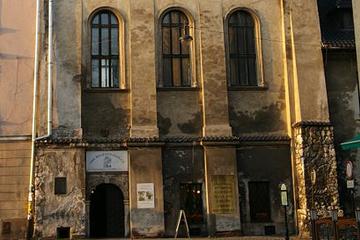
Kazimierz - or Jewish District - was for a long time an independent town with its own municipal charter and laws. Its colorful history was determined by its mixed Jewish-Polish population, and though the ethnic structure is now wholly different, the architecture gives a good picture of its past, with clearly distinguishable sectors of what were Christian and Jewish quarters. The suburb is home to many important tourist sights, including churches, synagogues and museums. The western part of Kazimierz was traditionally Catholic, and although many Jews settled here from the early 19th century until WWII - for example, the main Jewish hospital was on ul Skawińska - the quarter preserves much of its original character, complete with its churches.
A tiny area of about 300m by 300m northeast of Corpus Christi Church, the Jewish sector of Kazimierz became, over the centuries, a centre of Jewish culture equal to no other in the country. With the mass deportation and extermination of the Jewish people of Kraków by the Nazis during WWII, all traces of the folklore, life and atmosphere of the quarter disappeared. Today only the architecture reveals that this was once a Jewish town, though a handful of 'themed' restaurants, complete with live klezmermusic most nights, have been opened on ul Szeroka. Miraculously, seven synagogues survived the war, but only one of them continues to function as a regular place of worship, Tempel Synagogue. Parts of the film Schindler's List were filmed in Kazimierz.
Today Kazimierz is one of Kraków's inner suburbs and located within walking distance south of Wawel and the Old Town. It is known for its restaurants and bars which are atmospheric rather than touristy, and also has some good places to stay. The best way to see the area is by walking tour.